QNAP TS-451+ SOHO NAS Review
by Ganesh T S on October 29, 2015 8:00 AM ESTSingle Client Performance - CIFS & iSCSI on Windows
The single client CIFS and iSCSI performance of the QNAP TS-451+ was evaluated on the Windows platforms using Intel NASPT and our standard robocopy benchmark. This was run from one of the virtual machines in our NAS testbed. All data for the robocopy benchmark on the client side was put in a RAM disk (created using OSFMount) to ensure that the client's storage system shortcomings wouldn't affect the benchmark results. It must be noted that all the shares / iSCSI LUNs are created in a RAID-5 volume.
The QNAP TS-451+ manages to be amongst the top three in almost every benchmark trace. If at all one could nit-pick, it is the write performance. In real-life situations (with one or two clients), this minor performance aspect will hardly be noticed by users.
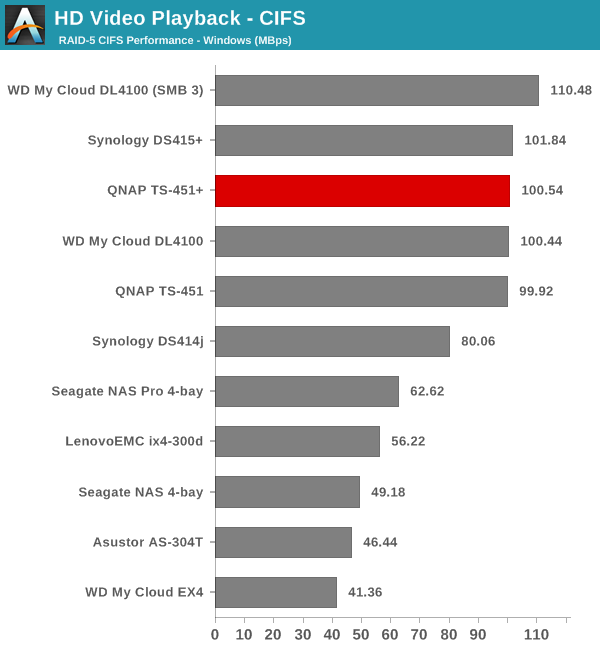
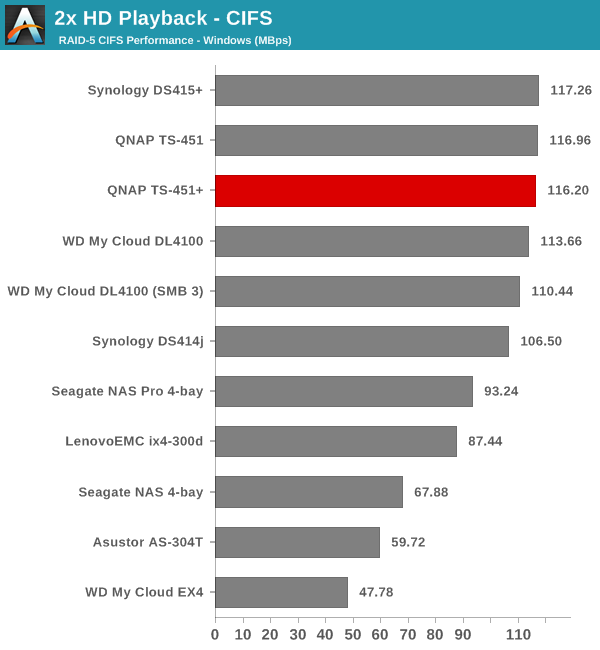
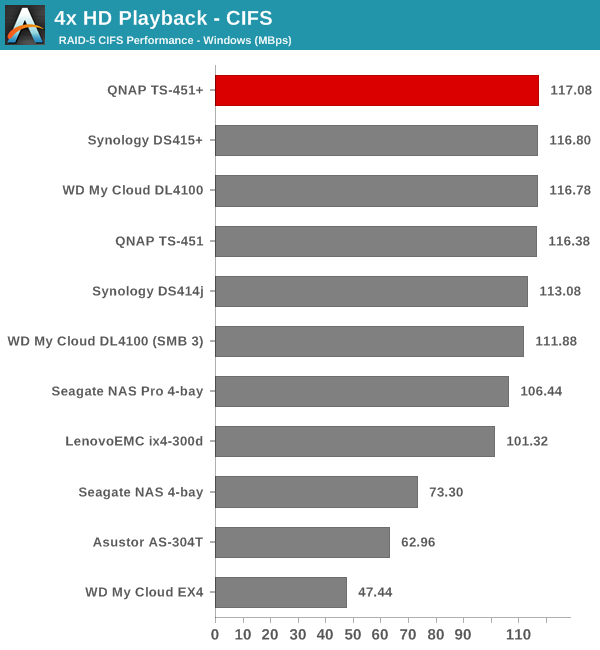
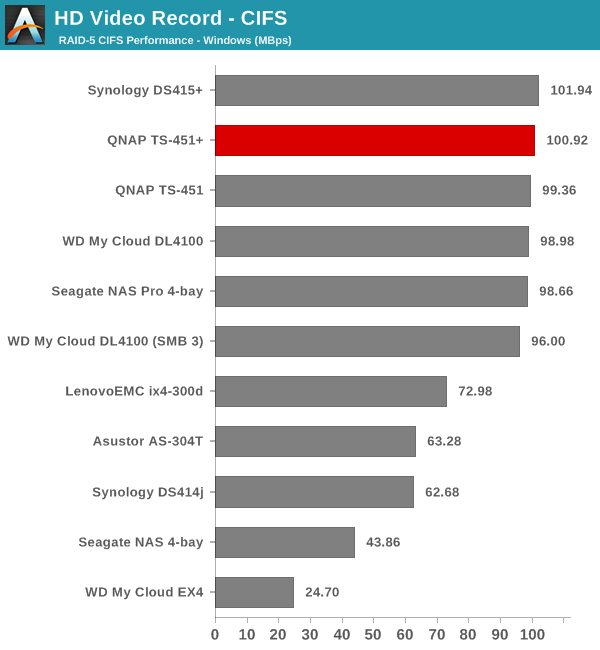
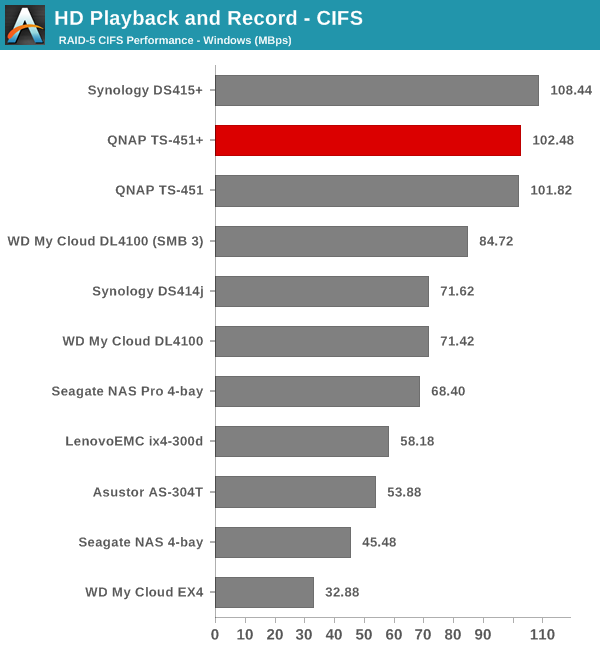
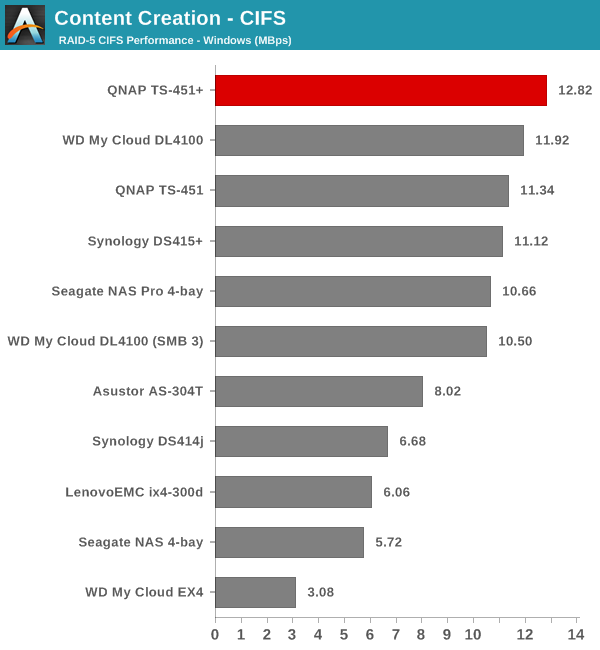
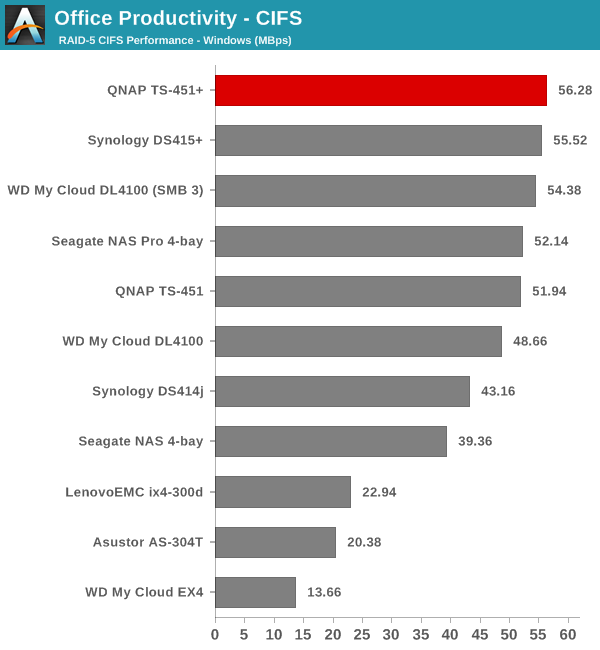
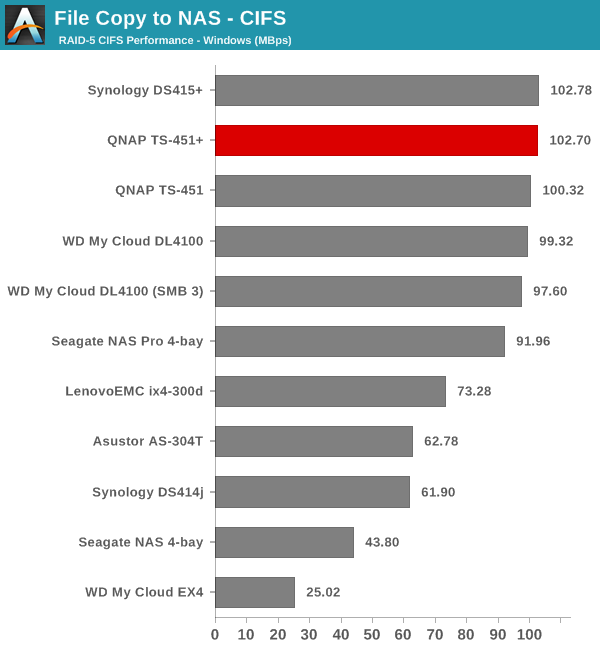
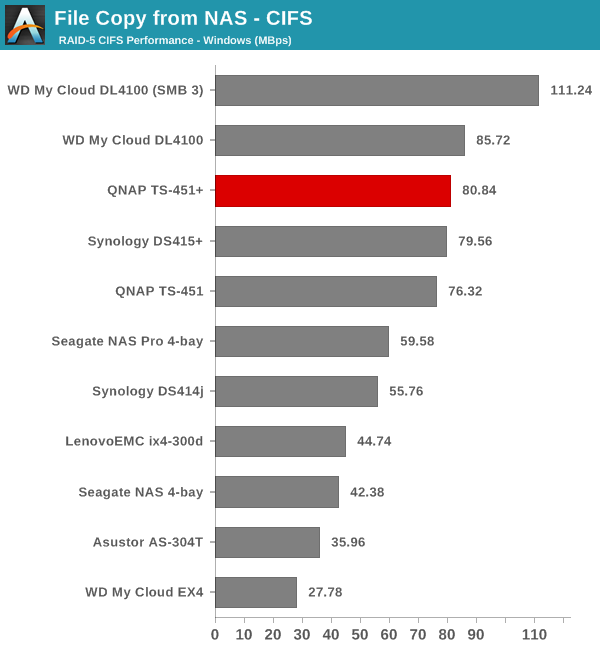
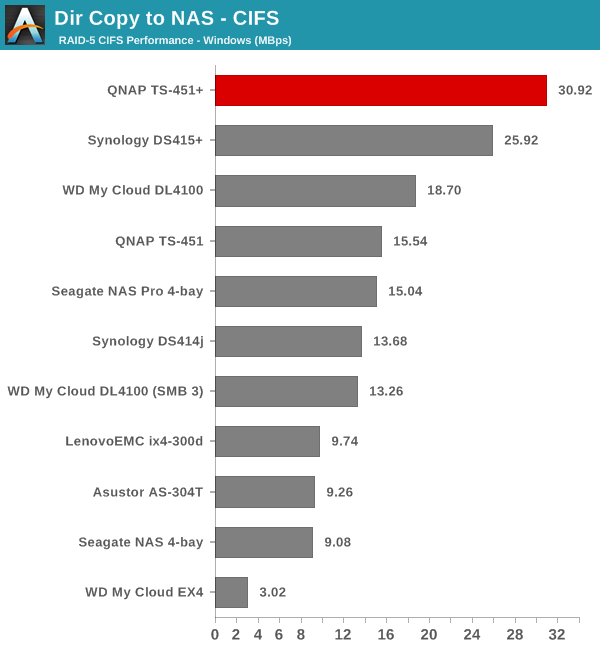
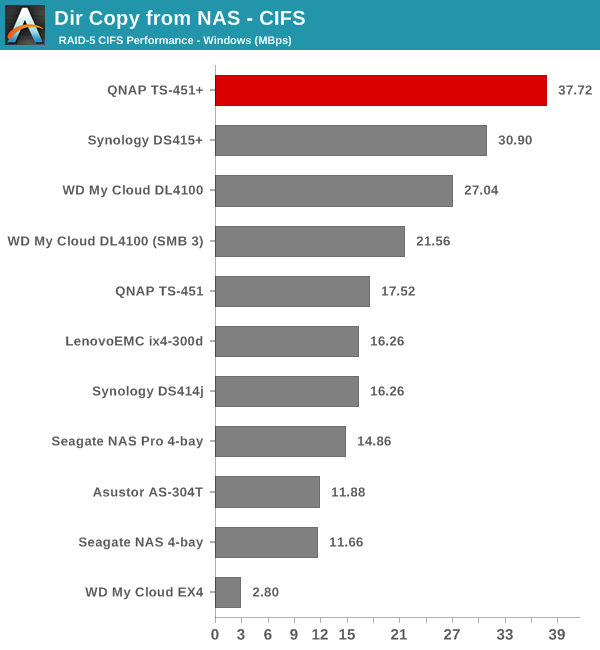

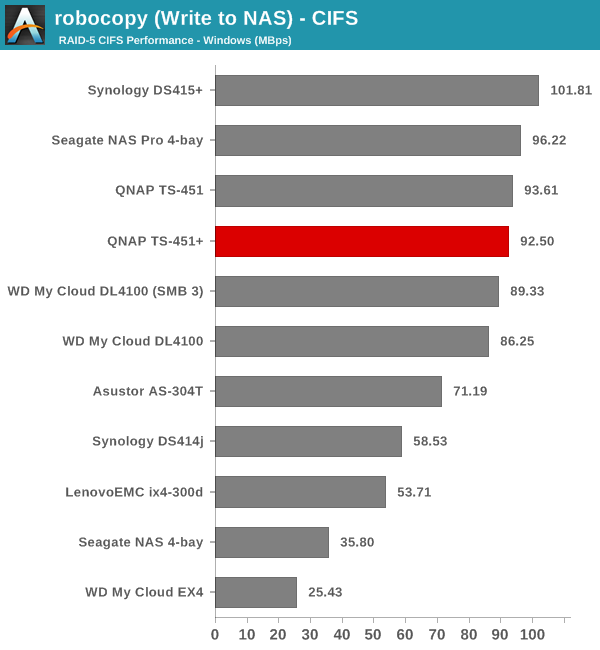
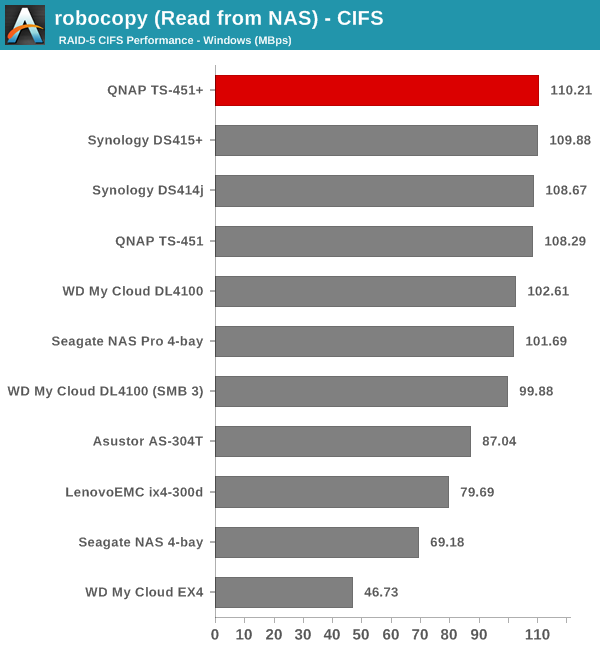
We created a 250 GB iSCSI LUN / target and mapped it on to a Windows VM in our testbed. The same NASPT benchmarks were run and the results are presented below. The observations we had in the CIFS subsection above hold true here too.
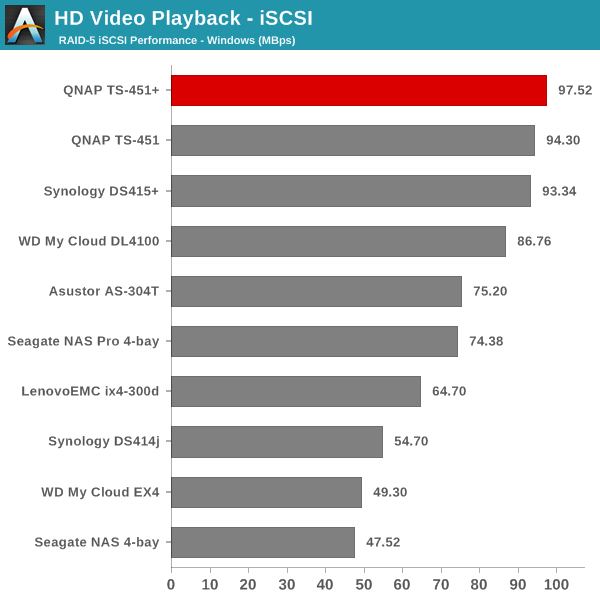
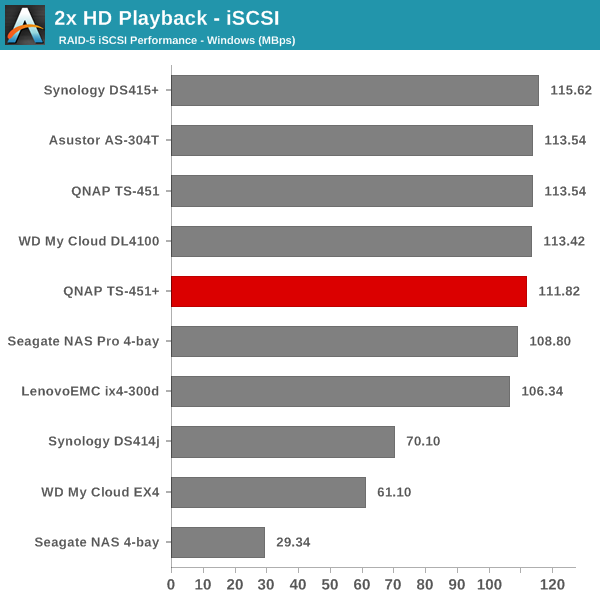
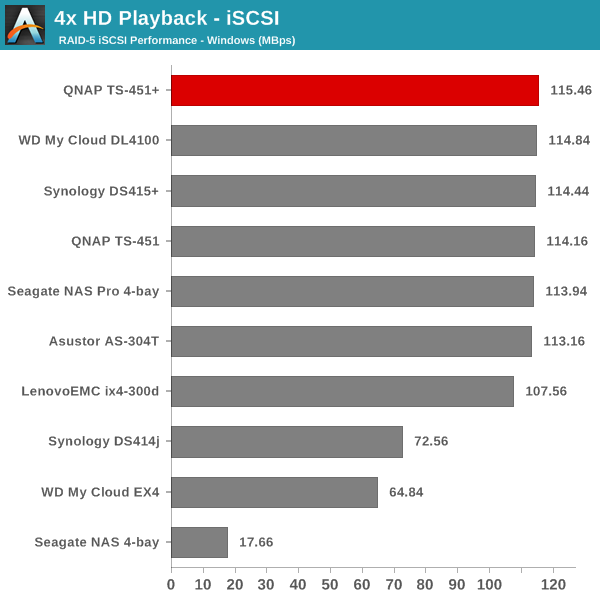
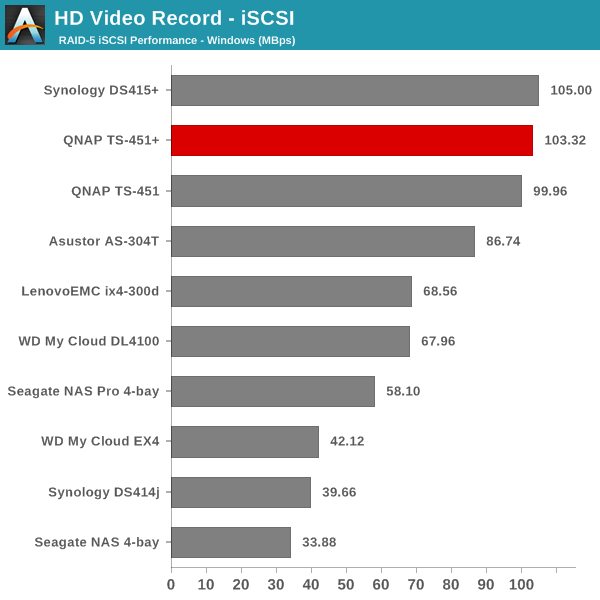
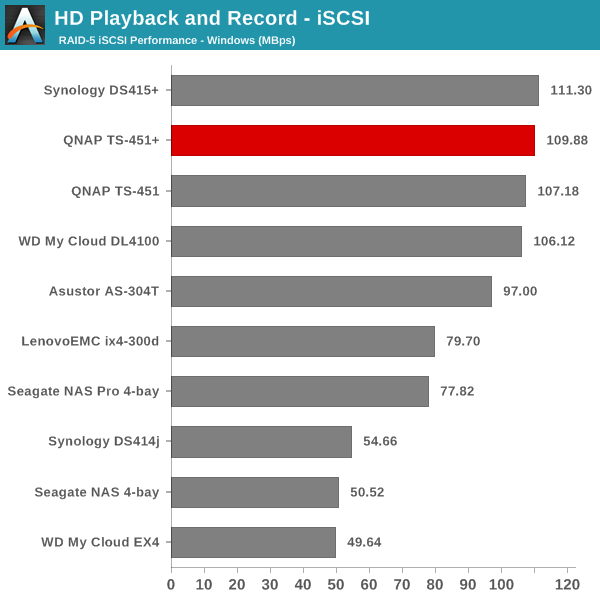
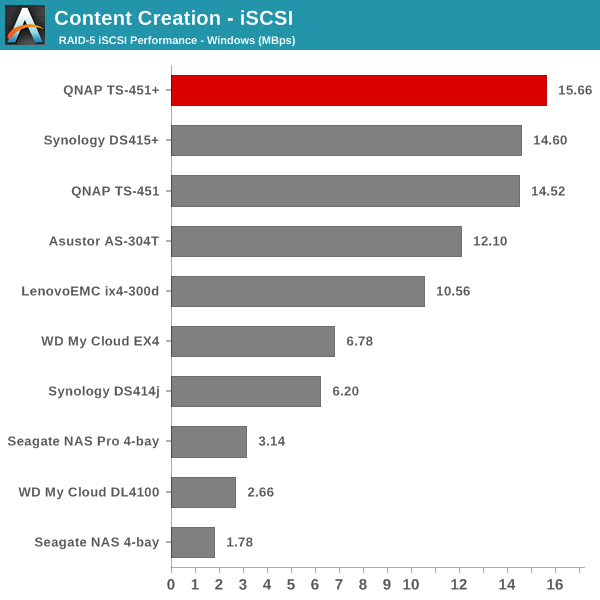
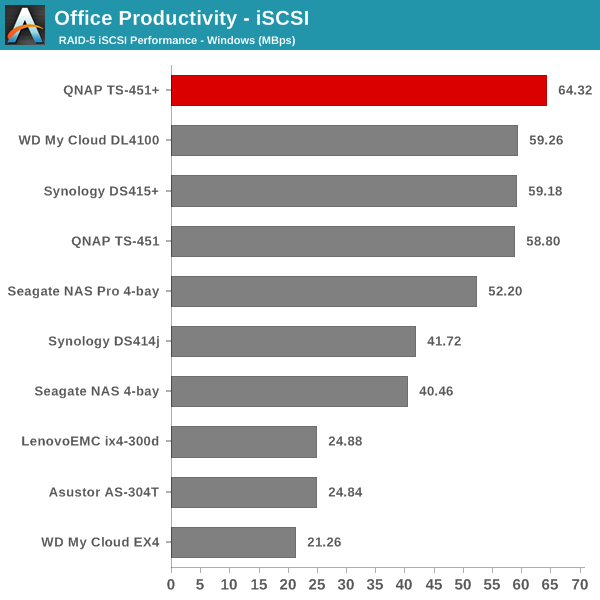
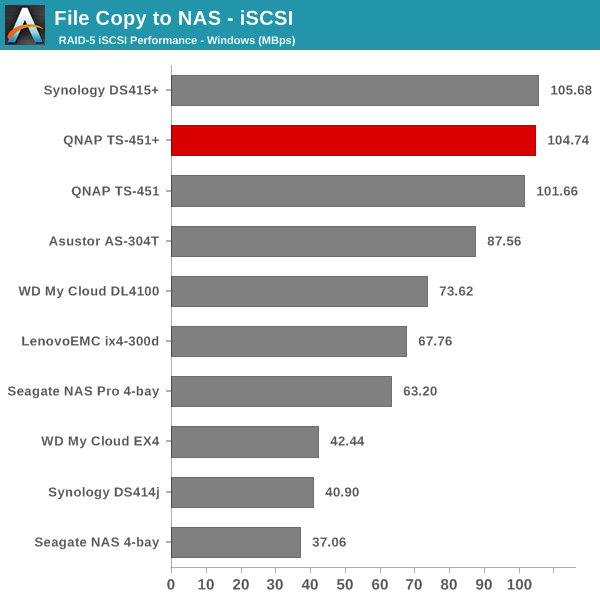
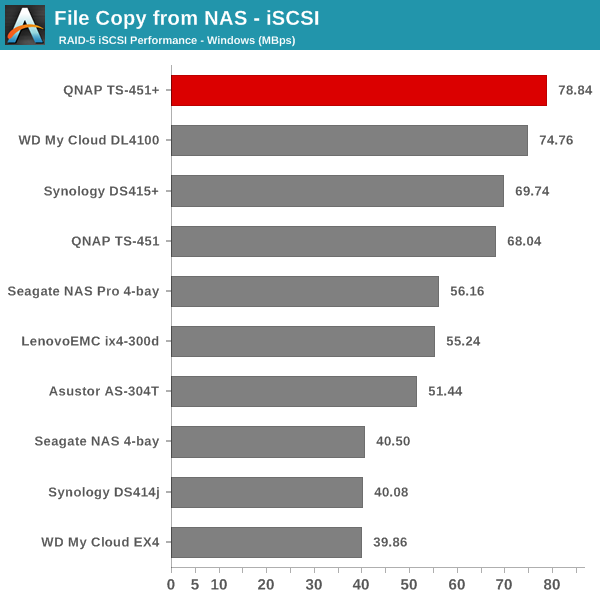
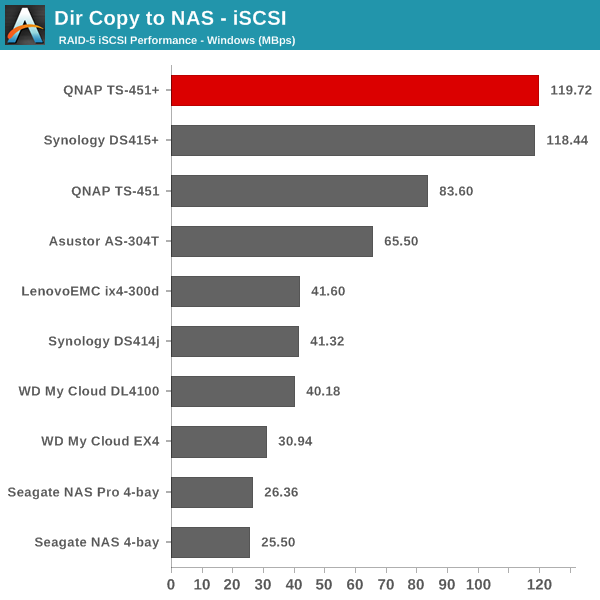

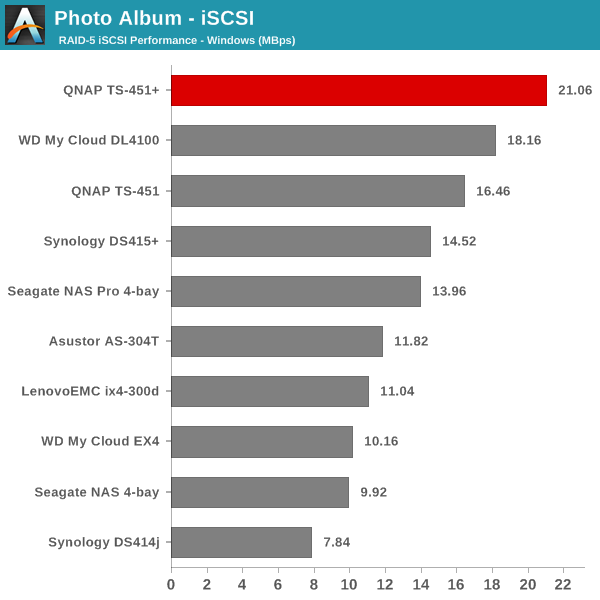
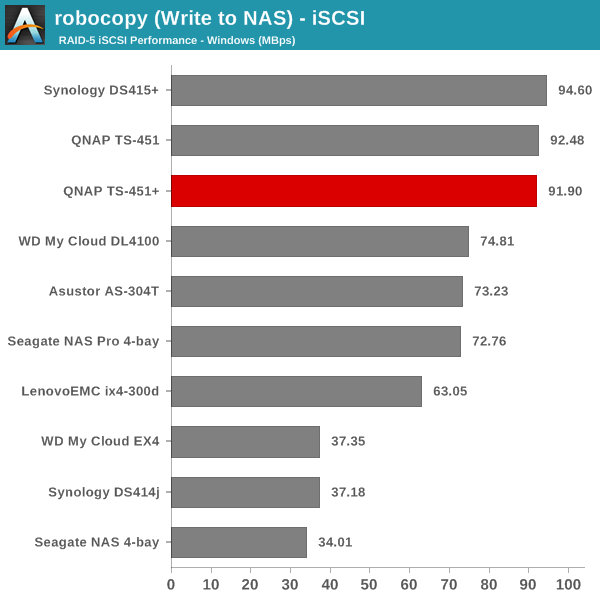
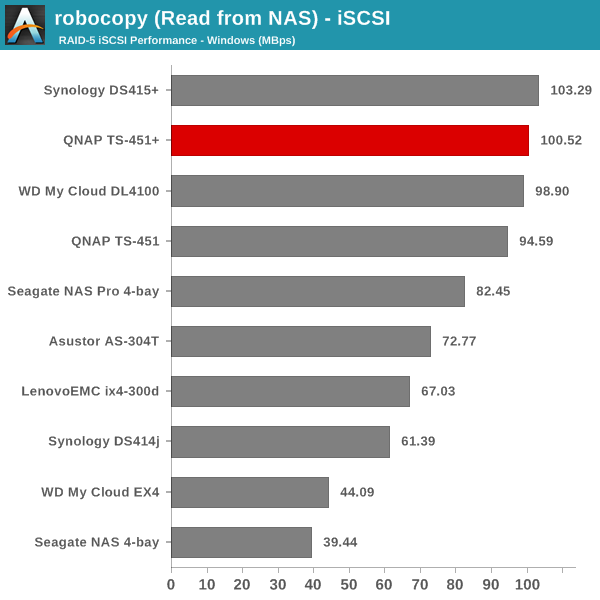
A few iSCSI benchmarks exhibited extensive caching behavior in some of the NASPT test passes. One of the issues we found was that setting the unit to report a volatile write cache would actually prevent Windows from turning off the write cache for the iSCSI volume. In any case, the iSCSI performance comes in the top three of the list, just like what we saw in the CIFS case.










34 Comments
View All Comments
Brianbeastsu - Thursday, November 26, 2015 - link
This has been available since the most recent firmware upgrade.....sync to most cloud services like google drive etc.....not 100% on one drive but I'm guessing unless Microsoft doest have an api for it you can do it with qnapShambles31 - Thursday, October 29, 2015 - link
I know this review didn't go into QTS much but I thought I'd ask a related question. Is there any way for QTS 4.2 to support shadow copy, or previous versions in windows? I picked up the 2 bay model for my parents hoping to use it as a backup for them. I wanted to use snapshots and shadow copy. I've got snapshots running but can't seem to get it to support shadow copies on networked files. Surely a NAS would support this?Minion4Hire - Friday, October 30, 2015 - link
I think network file VSS support was only just introduced with Windows Server 2012 R2. Otherwise you only have local volume support. But you should be able to get it working if you can connect it as an iSCSI LUN.kgardas - Thursday, October 29, 2015 - link
Does it support ECC RAM? IMHO a must have for such NAS...DanNeely - Thursday, October 29, 2015 - link
Not at this pricepoint/market segment. The J1900 doesn't support it. You need to step up from prosumer to small/medium enterprise level hardware for ECC. QNAP apparently doesn't offer ECC in anything below an 8bay model.mcveigh - Thursday, October 29, 2015 - link
Any comments on the remote? How was it's build quality?Kutark - Friday, October 30, 2015 - link
Can someone explain to me why basic NAS like this are $650. It makes no sense. You could easily build a box that would have far more processing power, with an awesome raid controller, for less than this. Only advantage i can see would be size?milkod2001 - Friday, October 30, 2015 - link
It is expensive because it's ready go to solution. You throw HDDs into that, spend 30 minutes with setup /install and that's it. You also have option to contact customer support if something goes wrong.Your own solution might be much better / cheaper but it requires knowledge / experience to put together hardware parts, install NAS OS and make it all work. There is no customer support, you are on your own.
Kutark - Friday, October 30, 2015 - link
That definitely makes sense. I always forget about the customer support angle because i don't even remember the last time i had to do customer support for any piece of hardware ever. Not trying to toot my own horn, but thats part of the fun of being a hardware enthusiast.Chloiber - Saturday, October 31, 2015 - link
You also pay for the software. I own a Synology DS415+ and use it (apart from the usual NAS stuff) for a OpenVPN Server, Docker with Jenkins, Download Station and have mobile apps available. A quite good backup software is already included and you have set that stuff up (well, apart from a robust, secure OpenVPN, which takes a bit longer) in a matter of minutes. Relatively sophisticated security / logging mechanisms are also included. I don't even want to imagine how long that stuff would take me with a self built NAS. I rather spend 100-200$ more and have a very good and versatile NAS than spend weeks fiddling around with linux.If you are up for it, go for it. For me, it was a no-brainer.